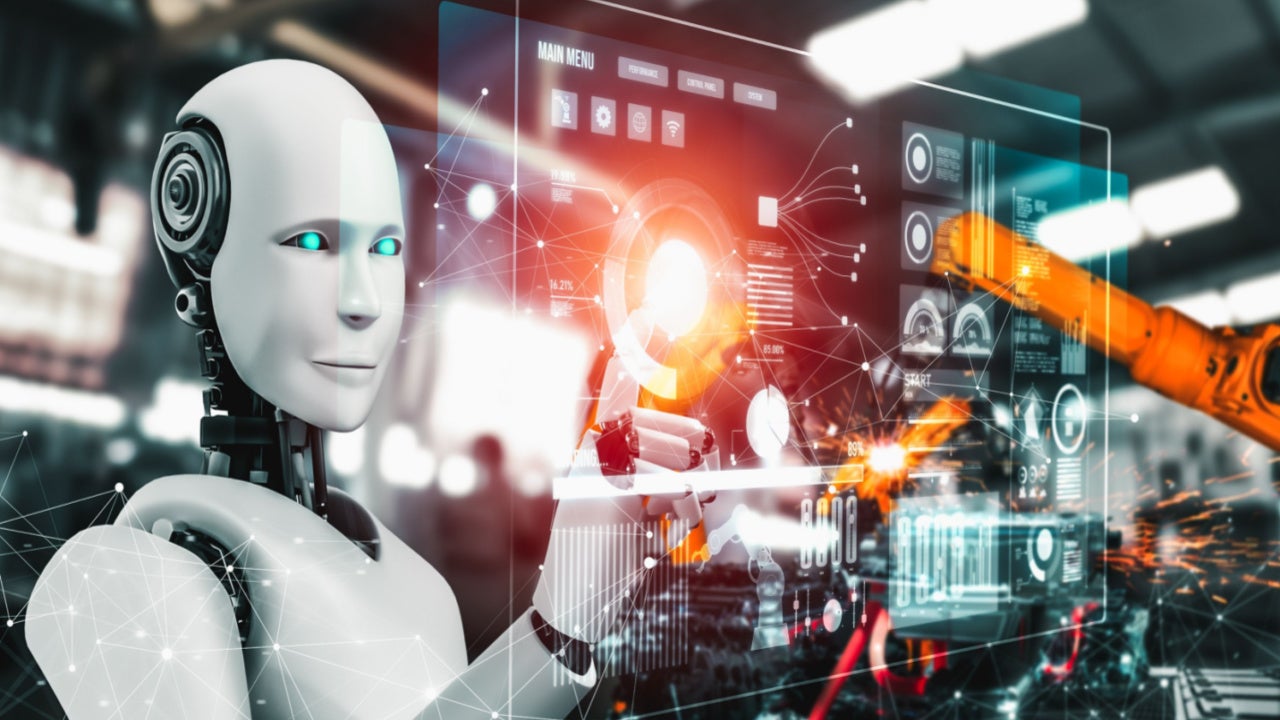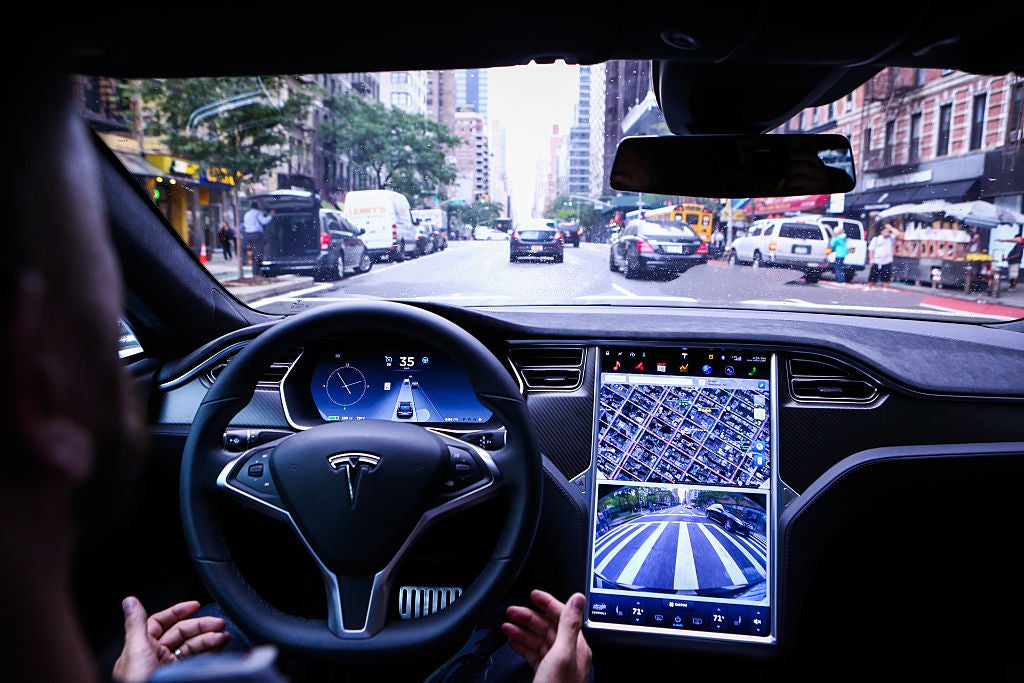
Verdict lists five of the top tweets on robotics in Q1 2022 based on data from GlobalData’s Technology Influencer Platform.
The top tweets are based on total engagements (likes and retweets) received on tweets from more than 380 robotics experts tracked by GlobalData’s Technology Influencer platform during the first quarter (Q1) of 2022.
The most popular tweets on robotics in Q1 2022: Top five
1. Massimo’s tweet on NASA’s Modular Robotic Vehicle (MRV)
Massimo, an engineer, shared an article on the NASA Johnson Space Centre building the MRV in collaboration with an automotive partner. The fully electric vehicle is being regarded as suitable for busy urban environments, large resort areas, and industrial complexes, the article detailed. The MRV has no mechanical connections to the steering, propulsion, or brake actuators. As a result, the driver uses the control inputs that is converted into electrical signals and communicated through wire to the motors inside the vehicle for manoeuvring the swerve drive car.
The MRV has a fully superfluous, fail-operational architecture that is critical for the safe functioning of a by-wire system. It is driven with the help of four independent wheel modules that are called e-corners. Each e-corner has a rotation capability of 180 degrees about its steering axis, and is designed for transportation in congested areas. The MRV can also be controlled remotely, the article noted.
Username: Massimo
How well do you really know your competitors?
Access the most comprehensive Company Profiles on the market, powered by GlobalData. Save hours of research. Gain competitive edge.

Thank you!
Your download email will arrive shortly
Not ready to buy yet? Download a free sample
We are confident about the unique quality of our Company Profiles. However, we want you to make the most beneficial decision for your business, so we offer a free sample that you can download by submitting the below form
By GlobalDataTwitter handle: @Rainmaker1973
Likes: 491
Retweets: 54
2. Ronald Van Loon’s tweet on the water-generating robot ELU
Ronald Van Loon, CEO of the Intelligent World, an influencer network that connects businesses and experts to audiences, shared a video on a robot capable of generating water on Mars. The robot extracts moisture from the atmosphere and converts it into clear water, the video illustrated. Called the ELU, the robot is dedicated to exploring moisture on Mars and converting it into drinkable water, giving hope to life on Mars, as well as other planets. Inspired by NASA’s missions to Mars, the robot was invented by Mahmoud Elkomy, a 28-year-old an Egyptian mechatronics engineer, and runs on solar power, the video demonstrated.
ELU condenses, filters, and sterilises the moisture from the atmosphere on Mars, and then adds minerals required for humans. The robot uses polymers to absorb moisture from the air rather than a mechanical heat exchanger used in air conditioners. This makes the technology easy to scale, and inexpensive to operate, at a cost of just 1.5-2 c per litre, according to Elkomy. However, he believes that ELU can be used on Earth too to generate water in the most arid regions.
Username: Ronald Van Loon
Twitter handle: @Ronald_vanLoon
Likes: 138
Retweets: 92
3. Antonio Grasso’s tweet on AI robots transforming e-commerce fulfillment
Antonio Grasso, founder and CEO of technology company Digital Business Innovation, shared an article on the retail technology company Fabric making profitable on-demand e-commerce a reality.The company aims at transforming the sector into local e-commerce using the micro-fulfillment technique, the article detailed. Fabric’s solution allows e-commerce to be efficient and at the same time, sustainable and inclusive. For example, the company has created a highly automated proximity logistics model using advanced Intel® technology that combines robotics and artificial intelligence (AI) to establish sorting centres within city centres. As a result, all warehouses function with AI-powered robots, doing away with the need for humans until the final phase of the delivery process, the article further noted.
The advanced automation allows customers to benefit from quick deliveries within an hour and also guarantees that their products will be available in-store at the given time. Fabric also believes that its micro-fulfillment centres should be easy to scale. As a result, the company monitors every centre from its support centre that is located in Tel Aviv, Israel.
Username: Antonio Grasso
Twitter handle: @antgrasso
Likes: 93
Retweets: 70
4. Jim Harris’ tweet on robots increasing Alibaba’s warehouse productivity
Jim Harris, a columnist and disruptive innovation thought leader, shared a video the Chinese e-commerce company Alibaba using just 60 robots in its warehouse to increase productivity by 300%. When an order is placed by a customer, the robots at the Alibaba warehouse locate the products and picks them out of the 32,000 shelves, the video demonstrated. It is here where humans intervene to pack and dispatch the products.
The video further described that the robots could carry loads up to 500 kilograms, and each one is designed with a laser system to avoid crashing into each other. When batteries run low, the robots take themselves to the charging stations. About 70% of the work in the warehouse are being done by the robots, which is being modelled as the future of e-commerce deliveries.
Username: Jim Harris
Twitter handle: @antgrasso
Likes: 81
Retweets: 138
5. Spiros Margaris’ tweet on the three key differences between AI and robotics
Spiros Margaris, a venture capitalist and owner of the investment management company Margaris Ventures, shared an article on the key differences between AI and robotics. The article detailed that two are markedly differently but confused to be the same. In other cases, governments and businesses use robotics-based applications that is convergence of AI and robotics. One the major differentiating factors between the two is conceptual, the article noted. As a result, AI can be described as the hardware and software tools that can make complex decisions autonomously, while robotics deals with the design, development, and creation of robots, which interact with other devices and humans based on actuators and sensors, the article highlighted.
The other key difference between AI and robotics is the level of automation. For instance, software automation uses AI, implying that devices are programmed to complete repetitive tasks within an organisation through math and logic. Industrial automation, on the other hand, involves the use of robots to manage and control heavy industrial operations, including packaging of products, warehouse management and manufacturing, the article detailed.
The third difference is that standard human robots are just designed to assist humans in performing tedious tasks, and are not required to learn or make decisions to analyse data. Meanwhile, AI is about humanising technology, and building AI models to make complex analyses, data assessment, and decisions, the article noted.
Username: Spiros Margaris
Twitter handle: @SpirosMargaris
Likes: 64
Retweets: 53





Related Company Profiles
Intel Corp